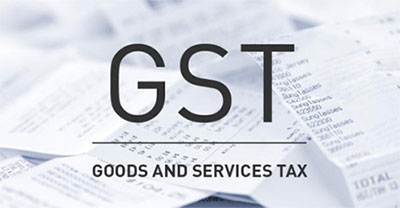(HOT) UPSC Current Affairs 2025 PDF
NEW! The Gist (OCT-2025) | E-BOOKS
GST (Goods and Services Tax): Important Topics for UPSC Exams
GST (Goods and Services Tax): Important Topics for UPSC Exams
 What is GST?
What is GST?
- It is an indirect tax for the whole country on the lines of “One Nation one Tax” to make India a unified market.
- It is a single tax on supply of Goods and Services in its entire product cycle or life cycle i.e. from manufacturer to the consumer.
- It is calculated only in the “Value addition” at any stage of a goods or services.
- The final consumer will pay only his part of the tax and not the entire supply chain which was the case earlier.
- It has been established by the 101st constitutional amendment act and there is a provision of GST Council to decide upon any matter related to GST whose chairman in the finance minister of India.
What taxes at centre and state level are incorporated into the GST?
At the State Level:
- State Value Added Tax/Sales Tax
- Entertainment Tax(Other than the tax levied by the local bodies)
- Octroi and Entry Tax
- Purchase Tax
- Luxury Tax
- Taxes on lottery, betting and gambling
At the Central level:
- Central Excise Duty
- Additional Excise Duty
- Service Tax
- Additional Customs Duty(Countervailing Duty)
- Special Additional Duty of Customs
Timeline of GST
- 1986: Vishwanath Pratap Singh, Finance Minister in Rajiv Gandhi’s government, proposed in the Budget a major overhaul of the excise taxation structure. Similar to GST in a theoretical sense.
- 2000: Initiating discussions on GST, Vajpayee government appoints an Empowered Committee headed by the then finance minister of West Bengal Asim Gupta.
- 2004: Vijya Kelkar, then advisor to the Finance Ministry, recommends GST to replace the existing tax regime.
- Feb 28, 2006: GST appears in the Budget speech for the first time. Finance Minister Chidambaram sets an ambitious task of implementing GST by April 1, 2010.
- Feb 28, 2007: Chidambaram said in his Budget speech that the Empowered Committee of finance ministers will prepare a road map for GST.
- April 30, 2008: The Empowered Committee submits a report titled 'A Model and Roadmap Goods and Services Tax (GST) in India' to the government
- Nov 10, 2009: Empowered Committee submits a discussion paper in the public domain on GST welcoming debate.
- Feb 2010: Government launches project for computerisation of commercial taxes. Finance Minister Pranab Mukherjee defers GST to April 1, 2011.
- March 22, 2011: Constitution Amendment Bill (115th) to GST introduced in the Lok Sabha
- March 29, 2011: Bill referred to Standing Committee on Finance.
- Nov 2012: Finance minister and state ministers decide to resolve all issues by Dec 31, 2012.
- Feb 2013: Declaring government’s resolve to introduce GST, the finance minister makes provisions for compensation to states in the Budget.
- Aug 2013: The standing committee submits a report to Parliament suggesting improvements. But the bill lapsed as the 15th Lok Sabha was dissolved.
- Dec 18, 2014: Cabinet approval for the Constitution Amendment Bill (122nd) to GST
- Dec 19, 2014: The Amendment Bill (122nd) in the Lok Sabha
- May 6, 2015: The Amendment Bill (122nd) passed by the Lok Sabha
- May 12, 2015: The Amendment Bill presented in the Rajya Sabha
- May 14, 2015: The Bill forwarded to joint committee of Rajya Sabha and Lok Sabha
- Aug 2015: Government fails to win the support of Opposition to pass the bill in the Rajya Sabha where it lacks sufficient number.
- Aug 3, 2016: Rajya Sabha passes the Constitution Amendment Bill by a two-thirds majority.
- Assam: 1st State to pass GST bill.
- 1 July 2017: GST to be applicable across India.
Benefits of GST
For Central and State Governments
- Simple and Easy to administer: because multiple indirect taxes at the central and state levels are being replaced by a single tax “GST”. Moreover, backed with a robust end to end IT system, it would be easier to administer.
- Better control on leakage: Because of better tax compliance, reduction of rent seeking, transparency in taxation due to IT use, an inbuilt mechanism in the design of GST that would incentivize tax compliance by traders.
- Higher revenue efficiency: Since the cost of collection will decrease along with an increase in the ease of compliance, it will lead to higher tax revenue.
For the Consumer:
- The single and transparent tax will provide a lowering of inflation.
- Relief in overall tax burden.
- Tax democracy that is luxury items will be taxed more and basic goods will be tax-free.
For the Business Class
- Ease of doing business will increase due to easy tax compliance.
- Uniformity of tax rate and structure, therefore, better future business decision making and investments by the corporates.
- Removal of cascading effects of taxes.
- Reduction in transactional cost will lead to improved competitiveness.
- Gain to the manufacturer and exporters.
- It is expected to raise the country GDP by 2% points.
GST COUNCIL
- 1st Federal Institution of India, as per finance minister.
- Will approve all decision related to taxation in the country.
- It consists of Centre, 29 states, Delhi and Puducherry.
- Centre has 1/3rd voting rights and states have 2/3rd voting rights.
- Decisions are taken after a majority in the council.
- Recently 5 supporting laws to the GST were recommended by the council, 4 for the parliament Central GST, Compensation law, Integrated GST, Union Territory GST, and a state GST will be passed by the respective state legislative assemblies.
- Tax slabs are decided as 0%, 5%, 12%, 18%, 28% for different types of goods and services whose final categorization is yet to be done.

